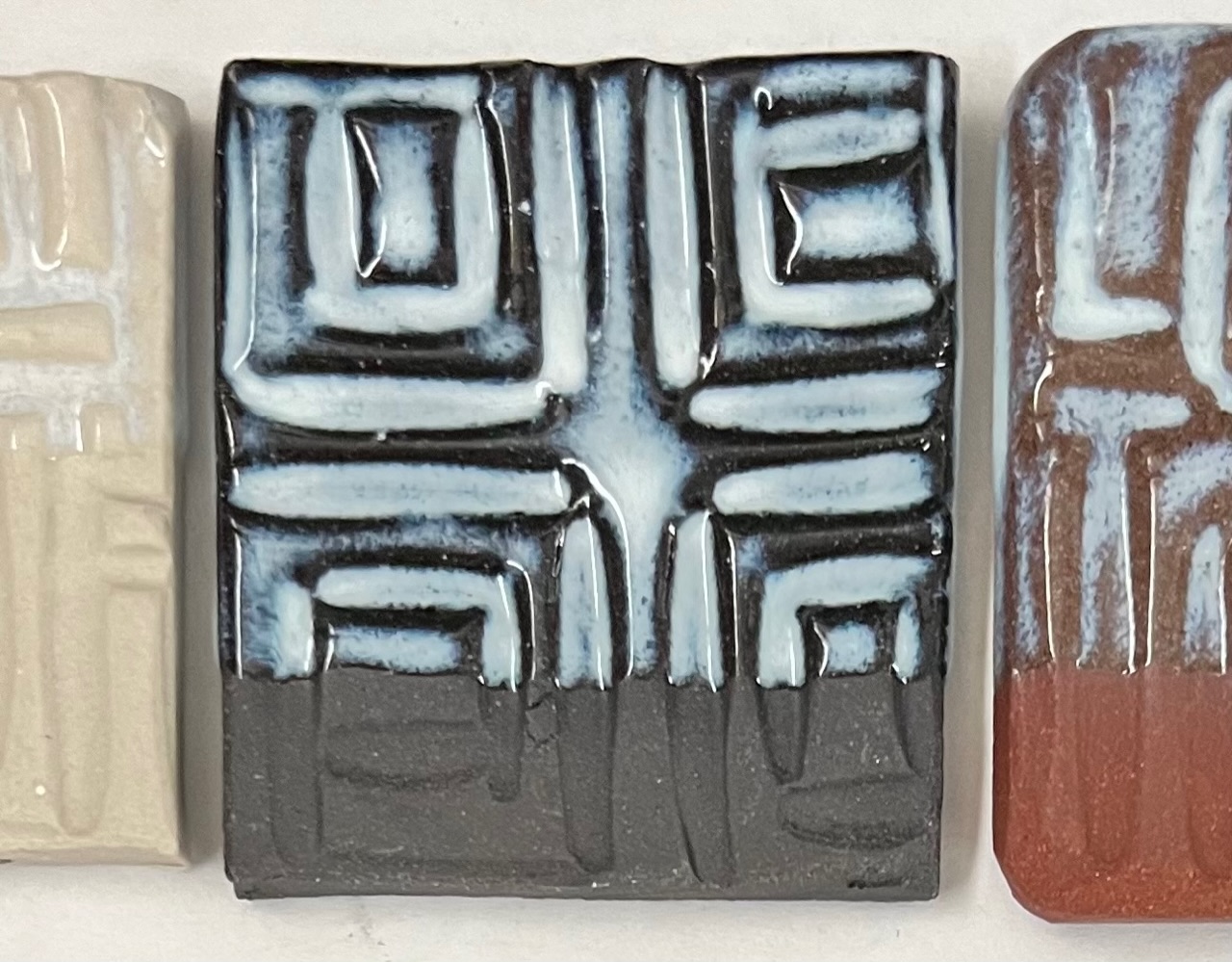| Monthly Tech-Tip | No tracking! No ads! |
Example of variegation by thickness-induced boron blue
This is G2826A3, a transparent amber glaze at cone 6 on white (Plainsman M370), black (Plainsman 3B + 6% Mason 6666 black stain) and red (Plainsman M390) stoneware bodies. When the glaze is thinly applied it is transparent. But at a tipping-point-thickness it generates boron-blue that transforms it into a milky white.
Related Pictures
A pottery glaze so reactive it can eat through a firebrick. The fix struck boron-blue gold!

This picture has its own page with more detail, click here to see it.
The melt fluidity tester was fired at cone 6. The glaze on the left is G2826A2, a 50:30:20 Gerstley Borate base glaze recipe (historically used for reactive glazes). The one on the right is G2926A3, an adjusted version that cuts the B2O3 level and adds lots of SiO2. The result is much more sane, although still very melt-fluid glaze. This is also a lesson in the chemistry that produces boron-blue: The one on the left does not and the one on the right does, producing a highly decorative boron-blue, especially on dark bodies. Why? High B2O3 is not the key, it is lower. CaO is lower but it was higher in the original 50:30:20 recipe and that had plenty of boron blue. The SiO2 appears to be the enabler, it is much higher. And we are using 325 mesh silica, so it dissolves in the melt better.
Videos
Links
| Glossary |
Boron Blue
Boron blue is a glaze fault involving the crystallization of calcium borate. It can be solved using glaze chemistry. |
| Glossary |
Glaze thickness
Many ceramic glaze benefits and issues are closely related to the thickness with which the glaze is applied. Many glazes are very sensitive to thickness, so control is needed. |
Got a Question?
Buy me a coffee and we can talk

https://backup.digitalfire.com, All Rights Reserved
Privacy Policy

